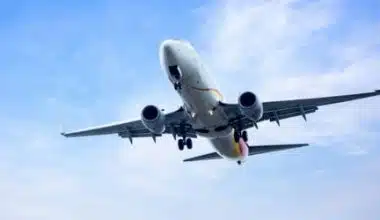Traveling internationally is an exciting trip full of new experiences and destinations. Part of the fun for many tourists is finding and enjoying local spirits and beverages. If you’re a booze connoisseur or simply want to bring home a special bottle as a keepsake, you may be thinking, “How much liquor can I carry on an international flight?”
Understanding Liquor Regulations
When it comes to how much liquor you can carry on an international flight, it’s critical to understand the restrictions in place. To ensure passenger safety and security, airlines and customs authorities have established specific criteria. By becoming acquainted with these limitations, you will be able to enjoy your favorite spirits while conforming to the rules of air travel.
To begin, you should be aware that liquor restrictions may differ based on your departure and arrival countries. When it comes to carrying liquor on an international flight, different countries have varied customs and legal constraints. As a result, before going on your vacation, it is critical to research the legislation of both your departure and destination nations.
In general, there are limits on the amount of liquor you can carry on an international flight as well as the alcohol content of the beverages. These laws are in place to protect passengers from potential threats and assure their comfort and safety. To minimize issues during your trip, you must respect and follow these regulations.
It’s worth noting that liquor regulations apply not only to the liquor you carry in your hand luggage but also to the liquor you include in your checked baggage. As a result, when intending to carry liquor on an international flight, it’s critical to consider both aspects.
Navigating liquor rules may appear difficult at first, but with prior research and expertise, you can ensure a pleasant travel experience. In the following sections, we will delve deeper into the limitations and restrictions imposed on carrying liquor on an international flight, as well as explore the allowances provided by different airlines and customs authorities.
Limitations and Restrictions on Liquor
Certain limitations and regulations surround the carrying of liquor on an international flight to preserve safety and security. These standards are in place to prevent potential risks and guarantee that all passengers have a pleasant travel experience. Understanding these limitations is crucial to avoiding any issues during your journey.
#1. Quantity Limitations:
The amount of liquor you can carry on an international flight is usually limited. These restrictions exist to prevent large amounts of alcohol from being transported, which could cause disruptions or health risks. Specific restrictions may apply based on the airline, destination, and type of alcoholic beverage.
#2. Liquid Restrictions:
In addition to quantity restrictions, liquid restrictions apply to all liquids brought in hand luggage. These restrictions are mostly related to security and are not limited to liquor. Liquid containers must typically be 100 milliliters (3.4 ounces) or less, and all containers must fit into a clear, resealable plastic bag.
#3. Alcohol Content Restrictions:
Some airlines and customs officials may place restrictions on the liquor content of the beverages you bring on an international flight. This is especially true for high-proof spirits or liquors with a high alcohol-by-volume (ABV). To ensure compliance with these restrictions, it is critical to check the exact legislation of your departure and arrival countries.
#4. Age Restrictions:
Certain countries have minimum legal drinking ages, and these laws apply to liquor transportation as well. It’s critical to understand the legal drinking age in your destination country, as well as any prohibitions on transporting alcohol for minors.
#5. Duty and Tax Considerations:
When carrying liquor on an international flight, it’s important to be aware of duty and tax considerations. Some countries impose duties or taxes on alcoholic beverages imported into the country, particularly if the quantity exceeds a specified threshold. To avoid unexpected expenditures or delays, become acquainted with the duty-free allowances and any associated fees.
You can organize your liquor shipment correctly if you understand these constraints and prohibitions. It is critical to research the legislation of both your departure and arrival nations, check with the appropriate airlines, and verify that all necessary standards are followed. This knowledge will assist you in navigating the boundaries of carrying liquor and having a pleasant vacation experience.
Alcohol Allowances by Airlines: Exploring Airline Policies for Carrying Liquor
When it comes to how much liquor you can carry on an international flight, it’s crucial to understand each airline’s individual laws and allowances. While there are general industry guidelines, individual airlines may have their own policies and variations. Understanding these limits will ensure compliance and smooth travel.
#1. Check with your airline:
Before your travel, check the airline’s official website or call customer care to learn about their specific regulations on bringing liquor. Airlines may have different rules regarding the amount, packaging, and type of alcohol permitted on board.
#2. Quantity Allowances:
On an international flight, airlines typically place restrictions on the amount of liquor you can carry in your hand luggage or checked baggage. It is critical to follow these restrictions to avoid problems during security checks or customs inspections. Some airlines may also have different restrictions for duty-free purchases made at the airport.
#3. Packaging Requirements:
Certain airlines have packaging regulations for taking liquor on board. For example, they may require that bottles be properly sealed and securely packed to avoid leaks or damage. To guarantee compliance, familiarize yourself with any special packing rules offered by your airline.
#4. Duty-Free Purchases:
Many airlines enable passengers to buy liquor from duty-free shops located in airports. Typically, these purchases are exempt from certain taxes and charges. However, the amount of duty-free liquor you can carry on an international flight may still be limited. Follow the airline’s standards and pay attention to any additional security steps that may apply to duty-free merchandise.
#5. Prohibited Alcohol:
It’s worth noting that certain airlines impose limits on bringing specific types of alcohol, especially those with a high alcohol content or in odd packaging. These restrictions are in place for the sake of safety and to ensure compliance with aviation laws. Check the prohibited items list on the airline’s website or contact customer service to check that the liquor you intend to carry is permitted on the international flight.
#6. Special Considerations:
In some situations, airlines may have unique considerations or policies regarding specific types of liquor, such as rare or expensive bottles. Such things may necessitate additional documentation or packaging. If you intend to transport any unusual or valuable liquor, you should call the airline ahead of time to understand their rules and ensure a pleasant flying experience.
Remember that airline policy might change over time, so make sure you get the most up-to-date information before your journey. You can comply with your airline’s laws and enjoy your flight with peace of mind if you are familiar with their alcohol allowances.
How Much Liquor Can I Carry on an International Flight?
The airline’s policies, the laws of the countries of departure and arrival, and any applicable duty-free allowances all play a role in determining how much liquor you can carry on an international flight. Here are some general rules to keep in mind:
#1. Airline Regulations:
The amount of liquor you can bring on board may differ depending on the airline. Some airlines allow you to bring a restricted amount of alcohol in your hand luggage, while others may require you to carry all alcohol in checked baggage. To ensure compliance, it is critical to study the exact policies of the airline you are flying with.
#2. Transportation Security Administration (TSA) Regulations:
The TSA imposes restrictions on bringing liquids in hand luggage if you are departing or transiting through the United States. Liquids, including liquor, must be packed in containers of 3.4 ounces (100 milliliters) or smaller and fit into a single quart-sized clear plastic bag. These laws, however, may not apply to liquor purchased from duty-free shops located beyond the security checkpoint.
#3. Duty-Free Allowances:
Duty-free allowances vary per nation and can limit the amount of liquor you can bring with you. Airport duty-free shops provide the chance to purchase alcohol at reduced prices, with frequently higher limitations than for ordinary transit. These allowances often apply to liquor purchased at duty-free outlets at airports or on the plane itself. It is critical to become acquainted with the duty-free allowances of both your departure and landing countries.
#4. Age Restrictions:
Remember that there are age limitations for purchasing and consuming alcohol. Even though you are legally permitted to transport a particular amount of liquor, you must adhere to the legal drinking age of both the departure and arrival nations.
To ensure you stay within the allowed limitations, check the airline’s individual requirements, study TSA regulations (if applicable), and research the duty-free allowances and import regulations of your departure and arrival nations. These sources will provide you with the most up-to-date and accurate information on the amount of liquor you can carry on an international flight.
Duty-Free Shopping and Liquor Purchases
Duty-free shopping at airports is a popular choice for visitors hoping to save money on liquor. These establishments sell a wide range of alcoholic beverages, making them an appealing option for acquiring rare spirits or stocking up on favorites. To guarantee a smooth experience, it’s crucial to understand the allowances and restrictions related to duty-free liquor purchases.
#1. Duty-Free Allowances:
Duty-free allowances are the maximum amount of liquor you can buy without paying additional taxes or duties. These allowances vary by destination country and may differ from those specified for general liquor transportation. It is critical to understand these restrictions to avoid potential penalties or confiscation of excess purchases.
#2. Pre-Flight Planning:
Research the duty-free shopping restrictions of both your departure and arrival countries before your trip. Learn about the individual liquor allowances and any associated requirements, such as age limits or declaration procedures. This planning will allow you to make informed decisions and prevent surprises at the airport.
#3. Purchase Considerations:
Consider the quantity restrictions imposed by your airline for transporting alcohol on board when browsing duty-free liquor stores. To avoid problems during security checks or boarding the plane, make sure your purchases comply with these restrictions. Before making any purchases, check with the airline or examine their policies.
#4. Packaging and Security:
Typically, duty-free retailers offer packaging services to guarantee that your liquor purchases are safely packaged for travel. To prevent breakage, they may seal the bottles in tamper-proof bags or provide customized packaging. Use these services to protect your purchases and comply with airline regulations.
#5. Connecting Flights and Liquor Purchases:
If you have connecting flights on your trip, you should be aware of the regulations of each airport you visit. Some airports may impose additional restrictions on the transportation of duty-free liquids purchased at earlier airports. In such instances, the purchases may need to be sealed in tamper-evident bags or placed in tamper-evident bags.
#6. Be Mindful of Local Laws:
While duty-free shopping allows you to enjoy tax-free rates, it is critical to be informed of your destination country’s local laws and regulations. Some nations may impose restrictions on the amount of liquor you can carry on an international flight into the country, even if you bought it duty-free. To ensure compliance upon arrival, familiarize yourself with these regulations.
#7. Duty-Free Reservations and Online Shopping:
Consider researching duty-free reservations or online purchasing options provided by airports to save time and ensure availability. These services allow you to pre-order your preferred liquor, assuring that it will be ready for pickup when you arrive at the airport. Furthermore, several airports offer home delivery services for duty-free shopping, which can be useful if you are worried about transporting fragile bottles.
Understanding the complexities of duty-free shopping for liquor allows you to maximize your experience and make informed decisions. To guarantee a comfortable and enjoyable journey with your tax-free spirits, remember to research duty-free allowances, follow flight regulations, and follow local laws.
How much liquor can I carry in international flight checked baggage?
5 liters
Checked Bags: Yes
Alcoholic beverages containing more than 24% but not more than 70% alcohol are limited to 5 liters (1.3 gallons) per person in checked bags and must be in unopened retail packaging.
How much liquor can I carry in international flight duty-free?
Generally, you can transport up to 1 liter (0.26 gallons) duty-free, except for passengers from specific countries.
How many bottles of alcohol can you bring through customs?
There is no legislative restriction on the amount of alcohol a traveler may bring into the United States for personal consumption; however, large amounts may raise the suspicion that the importation is for commercial purposes, and a U.S. Customs and Border Protection (CBP) officer may demand that you follow the rules.
Do you have to declare alcohol at customs?
Yes, while traveling internationally, you must usually disclose alcohol at customs. The particular criteria and limits for declaring alcohol differ depending on the nation into which you are traveling.
How do you pack liquor bottles in checked luggage?
When packing liquor bottles in checked luggage, it’s crucial to ensure they are securely protected to prevent breakage or leakage during transit. Here’s a step-by-step guide on how to pack liquor bottles in checked luggage:
- Choose Sturdy Bottles
- Seal Bottles Properly
- Wrap Bottles Individually
- Separate Bottles
- Use Sturdy Luggage
- Use Layers of Soft Items
- Secure the Luggage
- Label Your Luggage
Remember to follow airline and transportation laws while transporting alcohol in checked luggage. It’s also a good idea to examine your destination country’s unique rules and limits, as certain nations may have additional regulations or prohibitions on bringing in alcohol.
How much alcohol can I bring to the US?
Travelers who are 21 years of age or older can typically enter the United States duty-free with one liter per person. Additional quantities may be entered, although they will be subject to duty and IRS taxes.
Conclusion
Traveling internationally with liquor can be an enjoyable experience, provided you understand and comply with the regulations and limitations imposed by airlines and customs authorities. You can experience the flavors of your favorite spirits while traveling the world if you are aware of the rules, pack your bottles safely, and declare them when necessary.
- HOW TO TRAVEL WITH A DOG: Detailed Guide
- BEST TRIPS FOR SENIORS OVER 60 IN 2023
- AWAY LUGGAGE: 2023 Reviews
- BEST PARKS IN SAN DIEGO IN 2023-2024
- HOW MANY NATIONAL PARKS ARE IN THE US?






